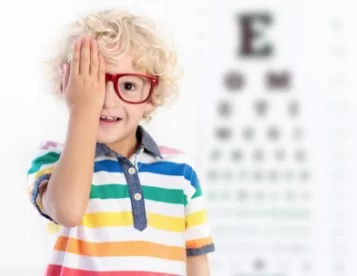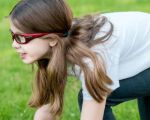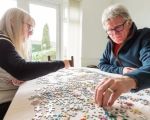
- understanding-eye-focusing-challenges-in-children
- effective-therapy-approaches-for-eye-focusing
- how-parents-can-help-at-home
- real-life-case-vision-training-that-works
- working-with-professionals-for-lasting-results
1. Understanding Eye Focusing Challenges in Children
Many parents are surprised to learn that their child’s struggle with reading or paying attention might not be purely academic—it could stem from a vision problem. Eye focusing accuracy is a child’s ability to shift focus between objects at different distances, such as the board and a notebook. When this process is inefficient, children may squint, complain of headaches, or even avoid close-up tasks altogether.
Commonly linked to conditions like accommodative dysfunction or convergence insufficiency, these issues don’t always show up in standard vision screenings. That’s why it’s crucial to understand how to improve eye focusing accuracy in children with vision problems and therapy effectively through structured intervention and targeted habits.
2. Effective Therapy Approaches for Eye Focusing
2.1. Vision Therapy: A Structured Treatment Plan
Vision therapy is one of the most effective methods for improving eye focusing in children. Unlike corrective lenses, which compensate for visual issues, vision therapy aims to retrain the eye-brain connection. Exercises may include focusing on alternating targets, convergence training, or even computer-based programs tailored to individual needs.
At Eye Docs, many parents report that within weeks of starting a therapy program, their children begin showing better attention spans and improved performance in reading tasks.
2.2. Occupational Therapy with Visual-Motor Integration
In some cases, eye focusing challenges are compounded by poor coordination between vision and body movement. Occupational therapists often incorporate visual-motor integration tasks, such as drawing shapes while watching a moving target, to enhance focus endurance. These methods help children adapt better in classrooms where multitasking is essential.
2.3. Use of Specialized Tools and Lenses
Therapists may also recommend tools such as flipper lenses or prism glasses to build the child’s focusing stamina. These tools create temporary visual stress, training the child’s eyes to adapt and refocus efficiently. These methods, when used under professional guidance, are non-invasive yet powerful.
3. How Parents Can Help at Home
3.1. Consistent At-Home Practice
Eye focusing therapy doesn’t stop at the clinic. Home exercises are crucial for reinforcing the skills learned during sessions. Activities like reading aloud, tracing objects, or catching small balls can be both fun and therapeutic. Practicing 15–20 minutes daily can bring steady progress.
3.2. Reducing Screen Time and Encouraging Eye Breaks
Prolonged screen use can strain a child’s focusing system. Parents should encourage the 20-20-20 rule: every 20 minutes, look at something 20 feet away for 20 seconds. It gives the eyes a necessary break and supports better visual endurance.
3.3. Creating a Visual-Friendly Environment
Good lighting, reduced glare, and ergonomic desk setups can significantly reduce visual fatigue. Ensure your child’s reading materials are placed at an appropriate distance and angle to avoid constant strain on their focusing ability.
4. Real-Life Case: Vision Training That Works
Consider Ethan, a 9-year-old struggling with reading comprehension. Despite being bright, he often lost his place on the page and avoided homework. His parents turned to Eye Docs after noticing he blinked excessively while reading. A vision assessment revealed convergence insufficiency and poor eye tracking.
After 12 weeks of tailored vision therapy and home exercises, Ethan’s reading speed and focus improved remarkably. He now participates actively in class and finishes homework without reminders. His story is a testament to how timely vision therapy can unlock a child's full potential.
5. Working with Professionals for Lasting Results
5.1. Early Diagnosis Matters
Early intervention can make a significant difference. If a child shows signs like squinting, skipping words while reading, or constant rubbing of eyes, an evaluation with a pediatric optometrist is essential. At Eye Docs, we specialize in identifying subtle visual deficits that standard tests may overlook.
5.2. Building a Personalized Plan
Each child is unique, and so should be their therapy plan. A successful approach often involves collaboration between optometrists, vision therapists, and families. Regular assessments and progress tracking ensure the therapy remains effective and adaptive.
5.3. Long-Term Vision Wellness
Even after improvements, regular checkups help maintain progress. Therapists may adjust the regimen or suggest maintenance exercises. Vision wellness is a lifelong journey, and building healthy habits early on can prevent future issues.
Parents looking for trustworthy treatment plans, expert therapists, or child-friendly vision products can explore our offerings at Eye Docs. We’re here to help your child see and succeed with clarity.








